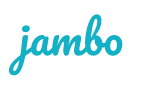
With expectations around stakeholder engagement rising, it's increasingly important to have a strategic stakeholder relationship management plan in place. But even with a solid stakeholder engagement strategy, things can unravel once you start tracking and reporting on all communications, engagements, commitments, and issues with your stakeholders.
A made-for-purpose software solution is the easiest way to improve your stakeholder relationship management efforts, but what are your options?
Customer Relationship Management (CRM) software
Customer Relationship Management (CRM) software is designed around the sales process to help an organization push leads through a sales funnel. It centralizes customer information, tracks interactions, and facilitates communication across different departments to improve customer satisfaction, retention, and sales growth. Popular CRMs include HubSpot, Salesforce, and Microsoft Dynamics. They track deals and focus on sales, marketing, reporting, and analytics.
Using lead/customer-focused software like a CRM to manage stakeholder relationships and engagement doesn't make sense. You're not selling to your stakeholders; you're engaging with them.
Stakeholder Relationship Management (SRM) software
Stakeholder Relationship Management (SRM) software is designed to help organizations effectively identify, manage, and engage with their stakeholders. Stakeholders include partners, regulators, government bodies, NGOs, Indigenous or Tribal Communities, land owners, business owners, and anyone interested in or influenced by a project's success or the organization's operations.
Managing engagement with all your unique stakeholders is vital because your stakeholder relationships can quickly grow and become overwhelming. Having the right software to help you stay organized is crucial to your organization's success. SRM software empowers you and your team to build strong stakeholder relationships by helping you manage all your stakeholder information and engagements in one defined space.
What is the difference between CRM and stakeholder relationship management software (SRM)?
While CRM (Customer Relationship Management) and SRM (Stakeholder Relationship Management) software share similarities, they have distinct scopes, purposes, and target audiences. What's the difference, and what software should you choose?
SRMs and CRMs have different purposes.
While both systems offer a space to store data like contact information, they are very different overall regarding workflows, language, and embedded features.
- CRM:
- Focuses primarily on managing relationships with customers or potential customers (leads).
- Designed to support sales, marketing, and customer service activities.
- Used to increase sales, track deals, improve customer service, retain customers, and grow revenue.
- SRM
- Focuses on managing relationships with a broad group of stakeholders relevant to an organization or project.
- Emphasizes engagement, communication, and collaboration across diverse stakeholder groups.
- Used to manage relationships with influence, mitigate project risks, ensure regulatory compliance, and improve overall stakeholder satisfaction and support.
CRM v SRM summary table
|
Aspect
|
CRM
|
SRM
|
|---|---|---|
|
Focus
|
Customers and sales relationships
|
All stakeholder and Indigenous community relationships
|
|
Scope
|
Narrow (mostly customers)
|
Broad (multiple stakeholder groups)
|
|
Typical uses
|
Sales, marketing, customer support
|
Engagement project management, compliance, government relations, community engagement, partnership management, policy development, etc.
|
|
Key features
|
Deal pipeline, sales management, marketing automation, support tickets, sales reporting
|
Stakeholder relationship management, engagement tracking, issue/risk management, engagement reporting
|
|
Users
|
Sales, marketing, customer service
|
Stakeholder engagement, Inigneous relations, public affairs, ESG managers, compliance officers, communications professionals, nonprofit managers, etc.
|
Why a CRM can't do the job of an SRM
If you, your IT Manager or another member of your team is thinking of trying to make a CRM do the job of an SRM, consider the following before deciding:
1. CRMs aren't stakeholder-focused
CRMs are customer-focused, but don't have stakeholder workflows, making managing stakeholder relationships significantly more challenging.2. CRMs have hidden costs
CRMs are customer-focused and typically require substantial customizations to meet stakeholder engagement needs. However, when you customize a CRM, the approach is usually to "set-it-and-forget-it," meaning there's no future stakeholder engagement support or maintenance. Any stakeholder engagement-specific updates or customizations will cost more money at the organization's expense, not the CRM vendor. These hidden costs associated with the necessary customizations do not guarantee that the configured software will meet your and your team's stakeholder engagement goals.3. When a CRM doesn't match your needs, you'll see low adoption rates
Getting your team on board with new software is often difficult, but introducing software that isn't made to meet your team's needs makes it even more challenging. Using a CRM to do something it isn't built for will overly complicate your process, resulting in low adoption rates by your team. This will make the potential for collaboration difficult, if not impossible.4. A CRM increases the likelihood of project risks
Forcing a CRM to fit your stakeholder engagement needs leaves your projects and programs open to threats. These threats can arise from the inevitable gaps in the CRM, where it can't fully meet your stakeholder engagement management needs. Consider what could happen if your project gets audited. An SRM will help you quickly report on all the data you need in the proper format. In contrast, a CRM can get complicated and messy quickly, leaving you open to repercussions (e.g., from gaps in your engagement history).5. CRM implementations waste valuable resource time
The substantial customizations a CRM will need mean you won't be up and running quickly. It will require extra time to develop the necessary add-on modules and to create the workflows you and your team will follow, which wastes valuable resource time.What are the benefits of Stakeholder Relationship Management (SRM) software?
1. SRMs help you to understand your stakeholders and your projects
An SRM lets you know your stakeholders, your relationships with them, and their related projects. This understanding comes from custom dashboards, which are stakeholder and engagement project-focused (not focused on leads and deals).2. SRMs can increase team collaboration
With workflows designed for managing your stakeholders, your team is more likely to use the software, which results in higher long-term adoption rates and better collaboration across projects.3. Running reports is simple with an SRM
With an SRM, your stakeholder engagement information is well-organized and easy to find, allowing you and your team to report on your data quickly. Easy reporting enables you to show engagement and consultation efforts and properly share your information for better transparency and a clearer understanding of your project's progress.4. You can build better stakeholder relationships with an SRM
As the name suggests, SRMs are adopted by organizations looking to develop long-term, meaningful relationships with their stakeholders. With an SRM, you can organize and manage all your stakeholder information and engagement, which helps you engage deeper, leading to better stakeholder relationships.5. SRMs can be used quickly
With workflows designed for managing stakeholder relationships and engagement, a cloud-based SRM can be implemented more quickly than a CRM requiring customizations. With fast implementation times and no hidden costs, SRMs will save you time and money.6. SRMs help gain insight into stakeholders and engagement
SRMs are built for stakeholder engagement, so they can help you keep your engagement projects on track by providing clear, real-time views of relatable key metrics and project progress. You can use these insights to identify what's going well and what needs attention quickly, spot trends and changes, and catch potential risks early, ensuring nothing slips through the cracks. This insight capability is one of the key reasons to choose SRM software over CRM software.What must you consider when choosing SRM software?
There is no surer way to destroy stakeholder trust than by failing to address issues or commitments effectively. The SRM "out-of-the-box" issues and commitment management capabilities mean the software has designated spaces for you to store, track, and analyze all your unique stakeholders' concerns or grievances, as well as promises or benefit agreements. Having a defined space for this information will help you organize and manage tasks effectively, which is vital as issues and commitments are often time-sensitive.
With these capabilities, you won't waste time making software that meets your needs (which you would do with a CRM). SRM software comes ready to use and meets your stakeholder relationship management needs, allowing you to focus your resources on the other crucial areas of your project.
However, not all SRMs are created equal, so take the time to look for SRM software that helps you quickly and easily record, track and report on information like:
- Profils des parties prenantes
- Stakeholder communications
- Questions relatives aux parties prenantes
- Stakeholder commitments
- Stakeholder and engagement insights
Jambo Stakeholder Relationship Management Software
 Jambo is a Stakeholder Relationship Management (SRM) software. It's the fastest and easiest way for organizations and governments to manage stakeholder engagement and consultation projects and programs. It's also flexible enough to meet unique requirements that keep you on top of engagement expectations.
Jambo is a Stakeholder Relationship Management (SRM) software. It's the fastest and easiest way for organizations and governments to manage stakeholder engagement and consultation projects and programs. It's also flexible enough to meet unique requirements that keep you on top of engagement expectations.
To learn more about how Jambo can simplify your stakeholder engagement, book a 15-minute discovery call with a Jambo expert!








